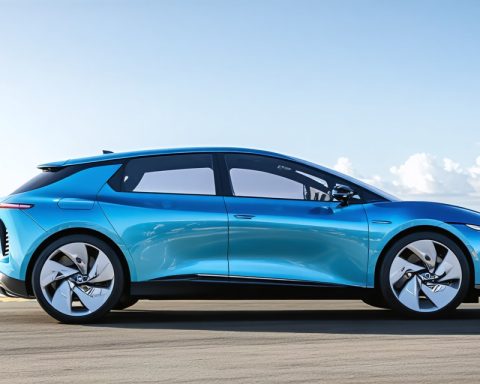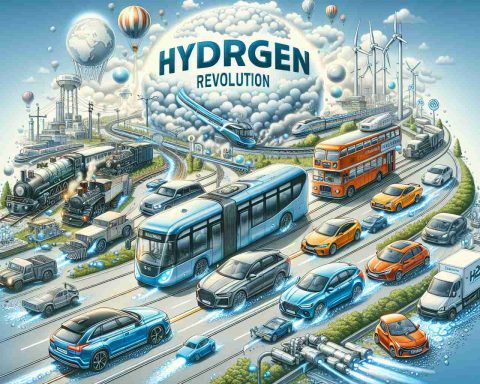California is on the cusp of an energy transformation as Cadiz, Inc. teams up with RIC Energy to establish the state’s largest green hydrogen production plant. Nestled in the expansive Mojave Desert, the Cadiz Ranch will be the epicenter of this groundbreaking project, utilizing the sun’s rays to produce 50 tons of green hydrogen daily.
Strategically Positioned for Success
Occupying a prime location at the crossroads of critical infrastructure, the Cadiz Ranch offers unparalleled access to railways, pipelines, and highways. This makes it an ideal site for such an ambitious venture. The project will leverage these logistical advantages to transport green hydrogen efficiently to Southern California, offering a sustainable alternative to fossil fuels for vehicles and power generation.
A Solar-Powered Future
RIC Energy, with an impressive portfolio across 14 countries, selected Cadiz after a rigorous evaluation process. The planned facility will span 3,000 acres and operate entirely off-grid, harnessing photovoltaic solar technology to power hydrogen production. This partnership not only signifies a step forward for renewable energy in the U.S. but also highlights the role of innovation in addressing climate change.
A Win-Win for Community and Economy
While focusing on sustainability, the project aligns with California’s renewable energy goals, aiming to meet the state’s clean electricity mandate by 2035. Supported by substantial federal funding, the initiative promises to inject economic value into the region and create an estimated 200,000 green jobs by 2030. Cadiz and RIC Energy are poised to make the desert a pivotal part of California’s clean energy narrative, marking a new dawn for renewable hydrogen.
The Untold Impact of California’s Green Hydrogen Revolution
California is not just embracing but spearheading a green hydrogen revolution that could redefine energy landscapes globally. While much excitement surrounds Cadiz, Inc.’s collaboration with RIC Energy to launch the state’s largest green hydrogen plant, several transformative facets of this development remain under-explored.
A Boon for Local Economies and Small Businesses
While the supply chain benefits of the Cadiz Ranch project’s strategic location in the Mojave Desert are evident, there’s an intriguing ripple effect on local economies that merits discussion. Beyond the monumental 200,000 green jobs projected by 2030, there’s a burgeoning ecosystem of small businesses emerging as auxiliary beneficiaries. Local restaurants, transport services, and equipment suppliers are poised to thrive as they cater to an influx of workers and capital, laying the foundation for sustainable community growth.
The Community-Building Paradox
Yet, this economic boon is not without controversy. Some local residents express concern over potential cultural and environmental shifts—such as rising property values and possible impacts on the native Mojave ecosystem—that accompany such large-scale industrial projects. Communities are actively engaging in discussions to balance economic benefits with environmental stewardship and cultural preservation.
How Does Green Hydrogen Affect Global Initiatives?
California’s green hydrogen endeavor serves a dual role on the global stage: it acts as a blueprint and catalyst. Worldwide, countries like Japan and Germany are already watching closely, eager to emulate California’s model. This cross-pollination of ideas and technologies could fast-track international efforts to decouple from fossil fuels, contributing to a global reduction in carbon emissions. But can the rest of the world keep pace with California’s ambitious timeline and scale? The answer will depend on international collaboration and shared technological advancements.
Exploring the Hydrogen Supply Chain: Distribution Challenges and Innovations
Efficient distribution of green hydrogen poses notable challenges, but it also fosters groundbreaking innovations in logistics and storage technology. New hydrogen storage materials, such as metal hydrides, are being developed to safely transport hydrogen over long distances. Furthermore, the establishment of hydrogen refueling stations along key highways is pivotal to integrating green hydrogen into everyday life. As these stations become more prevalent, green hydrogen could feasibly rival traditional fossil fuels in accessibility and convenience.
What Lies Ahead for Renewable Hydrogen?
As California strides toward a greener future, questions persist. What regulatory frameworks will ensure the responsible growth of this emerging industry? How will changes in federal energy policies impact the momentum of hydrogen initiatives? The answers lie in thoughtful policymaking and unwavering commitment to innovation.
For more information on renewable energy innovations, explore this U.S. Department of Energy.
In summary, the burgeoning green hydrogen industry in California is more than just an energy story—it’s a complex tapestry affecting economies, ecosystems, and global energy paradigms. As we proceed, keeping an eye on the socio-economic and environmental intricacies will be crucial to leveraging its full potential while mitigating possible downsides.














